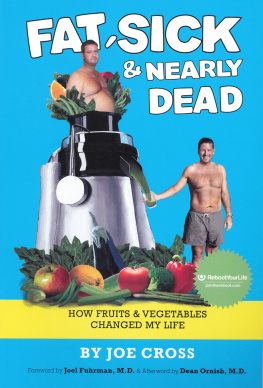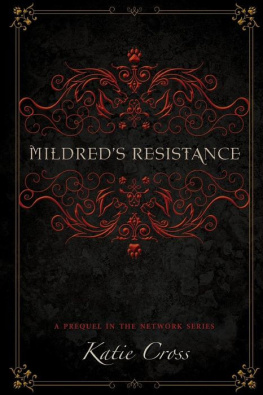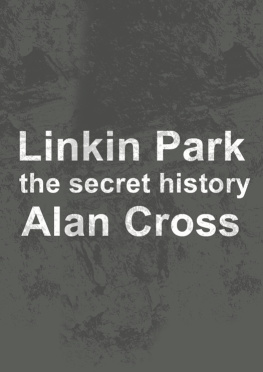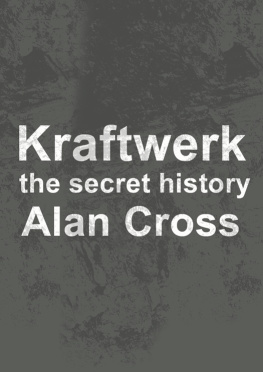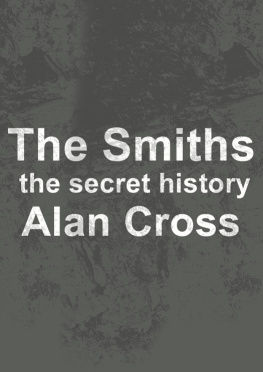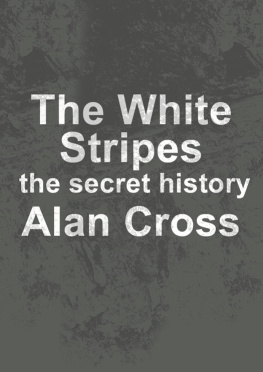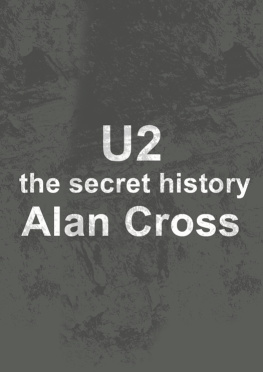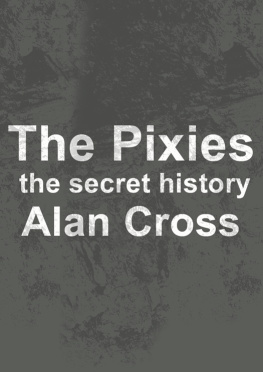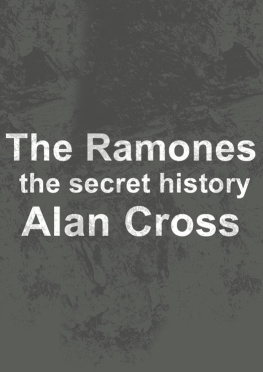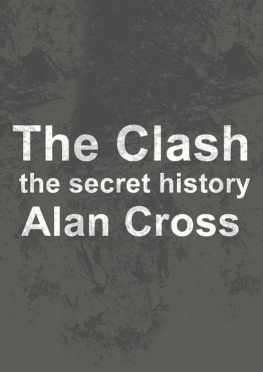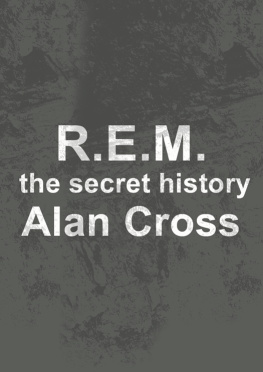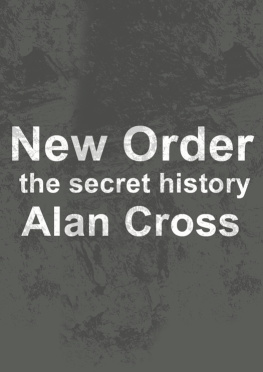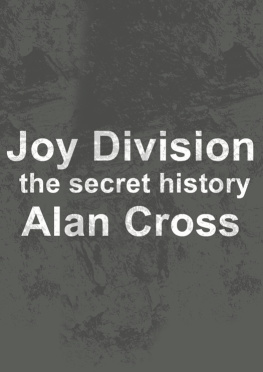Cross - Sonic youth: the secret history
Here you can read online Cross - Sonic youth: the secret history full text of the book (entire story) in english for free. Download pdf and epub, get meaning, cover and reviews about this ebook. year: 2011;2014, publisher: HarperCollins Canada;Audio Joe, genre: Home and family. Description of the work, (preface) as well as reviews are available. Best literature library LitArk.com created for fans of good reading and offers a wide selection of genres:
Romance novel
Science fiction
Adventure
Detective
Science
History
Home and family
Prose
Art
Politics
Computer
Non-fiction
Religion
Business
Children
Humor
Choose a favorite category and find really read worthwhile books. Enjoy immersion in the world of imagination, feel the emotions of the characters or learn something new for yourself, make an fascinating discovery.
- Book:Sonic youth: the secret history
- Author:
- Publisher:HarperCollins Canada;Audio Joe
- Genre:
- Year:2011;2014
- Rating:4 / 5
- Favourites:Add to favourites
- Your mark:
- 80
- 1
- 2
- 3
- 4
- 5
Sonic youth: the secret history: summary, description and annotation
We offer to read an annotation, description, summary or preface (depends on what the author of the book "Sonic youth: the secret history" wrote himself). If you haven't found the necessary information about the book — write in the comments, we will try to find it.
Sonic youth: the secret history — read online for free the complete book (whole text) full work
Below is the text of the book, divided by pages. System saving the place of the last page read, allows you to conveniently read the book "Sonic youth: the secret history" online for free, without having to search again every time where you left off. Put a bookmark, and you can go to the page where you finished reading at any time.
Font size:
Interval:
Bookmark:
The problem with revolutionaries is that they tend to burn out very quickly. They have one, maybe two, wild and crazy ideas that bore deep holes into the status quoand then, spent, exhausted and irrelevant, they disappear forever.
Its especially tough to be a musical revolutionary. Changing the worlds perception of how music should be made and enjoyed borders on the impossible. Even the most rabid musical rebels will eventually get tired of banging their heads against the wall, at which point they will either compromise their original vision in order to get some kind of attention from the mainstream, or quit music entirely.
This is why Sonic Youth has been so special to the evolution of alt-rock. They have been unwavering in their methods since the early 80s: no compromises, no shortcuts, no attempts to water things down for the masses. By challenging the conventions and traditions of rock and rolleverything from the controlled chaos of their song structure to the odd ways they tune their guitarsSonic Youth have had a massive effect on everything from hardcore punk to grunge to lo-fi indie music.
By the late 1970s, the core of the original New York punk scene with Patti Smith, the Voidoids and Heartbreakers had faded away. Angered by how quickly some of these once cutting-edge bands had been co-opted by the mainstream (and rebelling at how quickly the New York underground had been institutionalized, commercialized and rendered brainless), a small group of self-styled avant-garde artistes slowly came together in a new scene. Bound by a determination to put the anti back into rock (they were basically anti-everything), they called this new scene no wave (after a 1978 Brian Enosponsored collection entitled No New York).
Often the result was nothing more than deliberately excruciating noise that made the earliest Velvet Underground jams seem like pop songs in comparison. Even so, the no wave scene grew to include a surprising number of groups: Teenage Jesus and the Jerks, DNA, Mars, the Contortions, Tone Deaf, Red Transistor, the Gynecologists and Glenn Brancas Theoretical Girls.
The problem with being this avant-garde is obvious. Because these bands set out to be unpopular and unlistenable, they were. After an initial flurry of interest in this new brand of (supposedly) intelligent art-rock, it became tougher for these groups to find gigs. And because there were far more musicians than places to play, no wave faded faster than it was born. But while it lasted, the scene served as an odd musical laboratory, a place where many different and often unrelated musical concepts could freely mix. Sonic Youth emerged out of this stew.
Thurston Moore (born July 25, 1958) was a six-foot-six kid from Bethel, Connecticut, who worshipped all the right idols: the Velvet Underground, the Stooges, Television, the Ramones, Suicide. Having moved to New York in the fall of 1977, he eventually hooked up with several like-minded individuals in at least three different bands: Even Worse, the Coachmen and, finally, a Glenn Branca project. It was while floating around with Branca that Moore met Long Island native Lee Ranaldo (born February 3, 1958). Ranaldo also had some previous experience in bands with names like the Fluks (also known as the Flucts) and Plus Instruments. The two vowed to stay in touch.
Moores next band was called Male Bonding and featured Dave Keay (the last known drummer of the Coachmen), Ann DeMarinis (an art-school punk with some keyboard ability) and guitarist Kim Gordon (born April 23, 1958, not, as some sources list, 1953). Kim had come to New York via Los Angeles and Toronto and had already been in a noisy band called CKM. After some quick rehearsals, Male Bonding (now known as Red Milk) made their debut on December 17, 1980. Within a month, the group (now known as the Acadians) were skirting the edges of what remained of the no wave scene.
took the stage. Consisting of Moore, Gordon, DeMarinis and drummer (actually, he was a trumpet player and actor) Richard Edson, this first version of the band specialized in nothing more than a wall of white noise. Lee Ranaldo, another participant in the festival, apparently liked what he heard, because within weeks, DeMarinis was out and he was in as the groups second guitarist.
Out of necessity (since there wasnt much of an American indie scene back in the early 1980s), Sonic Youth did things incredibly cheap. During the Confusion Is Sex sessions, one of the studios reel-to-reel machines ate a section of the master tape. Since it was too late and too expensive to go back and rerecord those sections, the group just smoothed out the tape the best they could by hand and repaired any tears with cellophane tape. Then someone knocked over a can of Coke, soaking the master tape in a sugary mess. Once again, after a bit of desperate cleaning, the group simply soldiered on. In the end, Confusion Is Sex was one of those rare albums that had a serious impact on almost everyone who bought it. Building new musical bridges between the extremes of no wave, hardcore punk and more traditional types of music, the album did come across as weird and differentbut it still rocked.
Sonic Youth were unable to find an American label interested in their developing pop-noise approach. After a series of false starts in late 1983 and early 1984, the band were signed to Blast First Records, an indie label based in Britain and distributed by Rough Trade. For the first time in their career, Sonic Youth were with a label that could guarantee their records would make it to a large number of stores around the world. Following the release of the EP Death Valley 69 (on another labelHomesteadin 1985), Bob Bert departed the band for good and was replaced by ex-Crucifucks drummer Steve Shelley (born June 3, 1962). He was on board by the time the band recorded their second album, Bad Moon Rising (1985), a deliberately discordant, intentionally dissonant recording drenched in feedback but with a definite nod to traditional song structure.
By the end of 1985, Sonic Youth had become indie darlings, especially in the UK thanks to Blast Firsts distribution. A series of British tours that also featured the Butthole Surfers and Big Black created a strong awareness and appreciation of what was happening below the surface in America. Meanwhile, back home in the States, many of these Blast First releases were selling surprisingly well as imports. Although a few major labels took notice and began making polite inquiries about their availability, Sonic Youth refused every temptation sent their way.
In 1986, they severed ties with Blast First in favor of a new exclusive deal with SST, the hardcore label formed by Black Flag and home to Hsker Du and the Minutemen. The first album under that deal was EVOL (love spelled backwards, 1986), a release that showcased Sonic Youths growing ability to tame noise with melody and a newfound sense of discipline. The music was still raw and unusual, but it was played and recorded with more basic structure. Gone were the long free-form jams, replaced by songs constructed with simple phrases that were repeated throughout the piece. Beyond the curtain of fuzz and noise were wisps of melody. It didnt always work, but when it did, the effect was hypnotizing. A further advance in this direction came with Sister in 1987, an album so powerful and different for its day that even Rolling Stone had to admit that it was pretty good.
Now that the group had evolved beyond an oddball performance-art outfit, Sonic Youth became favorites with US college radio, which spread their music to an even wider audience. Thanks to these campus DJs, Sonic Youth (and underground bands like them) started gaining acceptance in college towns around the country: Seattle and Olympia, Washington; Chicago; Boston; Athens, Georgia; Los Angeles and Orange County. As new, young bands in these cities bought Sonic Youth albums, they were inspired by what they heard: the infinite sonic potential of the guitar.
Font size:
Interval:
Bookmark:
Similar books «Sonic youth: the secret history»
Look at similar books to Sonic youth: the secret history. We have selected literature similar in name and meaning in the hope of providing readers with more options to find new, interesting, not yet read works.
Discussion, reviews of the book Sonic youth: the secret history and just readers' own opinions. Leave your comments, write what you think about the work, its meaning or the main characters. Specify what exactly you liked and what you didn't like, and why you think so.



